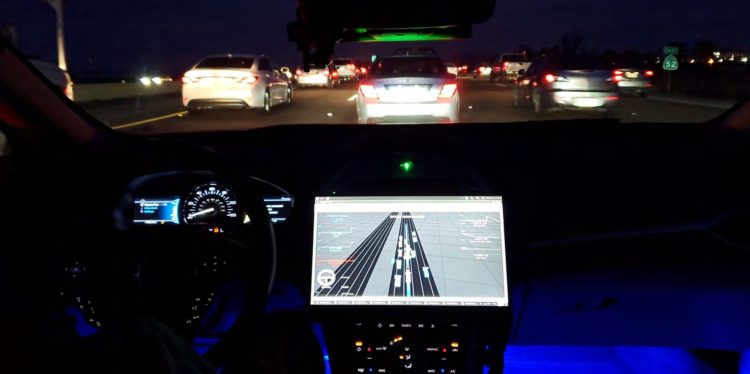Following Qualcomm’s promise last December of a major and unexpected automotive announcement at CES, the company today revealed several major vehicular initiatives: the new Snapdragon Ride autonomous driving platform, a Car-to-Cloud services platform, and a cellular vehicle to everything (C-V2X) global readiness and RSU reference platform, all designed to kick connected, self-piloting car development into high gear.
Originally called “Drive Pilot,” Snapdragon Ride is effectively an end-to-end solution to enable automatic control of a car, including the hardware, software, and development tools to let a vehicle plan a trip, handle lane changes, and make reasonable decisions about the safety and comfort of passengers under unexpected conditions — in other words, driving like humans, not robots. At 10 to 20 times lower power consumption than current solutions, the system will be capable of offering level 2+ autonomy, including full highway driving, plus short-range autonomy for self-parking and summoning from a parking spot. By trading for higher power consumption, autonomous shuttles, taxis, and trucks will have the option of a more powerful accelerator for level 4 and level 5 autonomy.
Snapdragon Ride combines a collection of sensors — traditional camera, short- and long-range radars, and lidar — with C-V2X communications, location awareness, and a Snapdragon system-on-chip to enable a car to drive itself between map locations. Fusing together inputs from the sensors, Qualcomm’s chip and algorithms automatically perceive both the vehicle’s immediate environment and its precise location on HD maps, as well as locations of street lanes, other vehicles, and objects, with predictions of vehicle locations ahead of their actual movements.
The company also announced the Qualcomm Car-to-Cloud Platform, giving car makers the opportunity to offer on-demand services to customers before and after a vehicle is purchased. Interestingly, the platform promises to bring data collection and analytics into vehicles, enabling a car maker to know what features customers are using or might be enticed to use so that it can pitch of free trials, upgrades, and new advanced capabilities post purchase.
June 5th: The AI Audit in NYC
Join us next week in NYC to engage with top executive leaders, delving into strategies for auditing AI models to ensure fairness, optimal performance, and ethical compliance across diverse organizations. Secure your attendance for this exclusive invite-only event.
Like rivals Adobe, Mojio, and Nvidia, Qualcomm sees the user software experience within a car as an untapped market, though the San Diego-based company’s strong position with existing Android chips and apps gives it a leg up. Future cars will be able to connect to the cloud to add features such as health monitoring, a Wi-Fi hotspot, movie downloads, advanced safety options, and even fleet-wide upgrades for commercial deployments. Cars using the system will begin with a collection of bundled apps and content, then unlock additional capabilities over the air, Tesla style.
On the cellular vehicle communications front, Qualcomm notes that at least 18 automakers and 8 licensees are in the process of readying C-V2X solutions based on 5G — notably with a 2021-2023 commercial launch timetable. While the earliest deployments are expected in China this year, Ford announced plans for a U.S. launch in 2022. Audi, BMW, Ford, GM, Hyundai, Nissan, and multiple Chinese brands are all working on C-V2X initiatives, while governments have been dedicating wireless spectrum to the standard so early commercialization can begin.
During 2020, Qualcomm will offer a vehicular solution that simultaneously offers 5G and C-V2X communications, including new 4G LTE Advanced Pro and 5G standalone/non-standalone hardware, as well as an established, combined applications processor for C-V2X and telematics. In addition to its cellular capabilities, Qualcomm’s second-generation connected car reference design will also support Wi-Fi 6, Bluetooth 5.1, and a variety of other features, though the company is introducing a less capable Wi-Fi 5 alternative for automotive — QCA6595AU — for more affordable vehicles that don’t need the latest, greatest, and fastest (1.77Gbps throughput) solution.
Updated January 7 at 8:34 a.m. Pacific: This article originally referred to Snapdragon Ride under the name “Snapdragon Drive Pilot,” which Qualcomm changed. References to Drive Pilot have been updated with the “final product name.”

